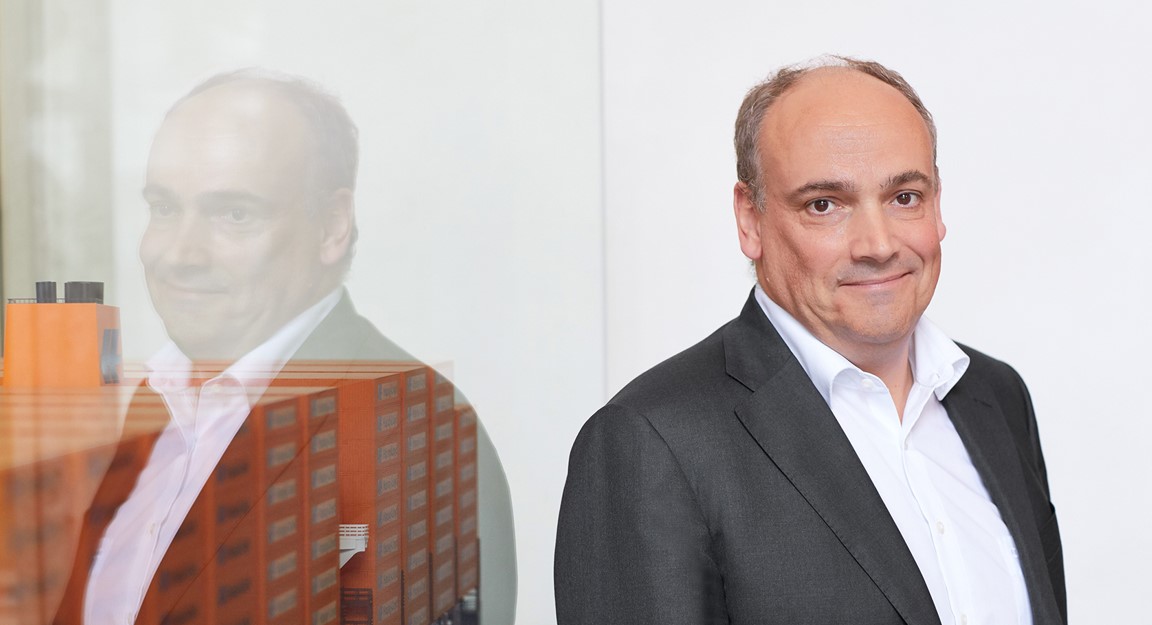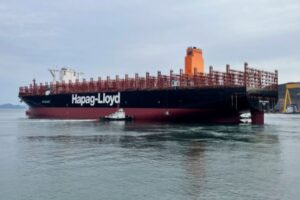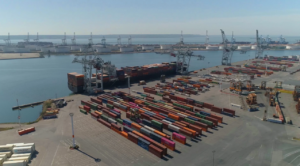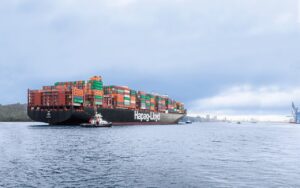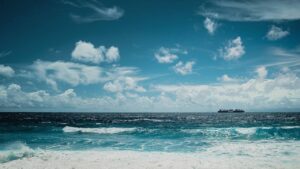Hapag-Lloyd CEO: Industry must work together to create a level-playing field
The shipping industry needs to work together to accelerate the energy transition and establish a level playing field, ensuring Europe’s competitive edge on the global stage, Rolf Habben Jansen, CEO of Hapag-Lloyd AG, said yesterday in a powerful address at the European Shipping Summit (ESS) in Brussels.

The European Shipping Summit 2023 in Brussels 19-20 September brought together representatives from across the maritime industry, government, finance, as well as energy and technology industries to address some of the most pressing topics for the future of the industry and of Europe.
Jansen, who is also the co-chair of the World Shipping Council’s Board, availed of the opportunity to share his views on the latest challenges the industry faces, the most pressing one being decarbonization and the sector’s approach to facilitating the transition while leaving no one behind.
The message of sector-wide collaboration comes at a critical time for European shipping, as the European Union’s Emissions Trading System (EU ETS) is on the verge of entering into force.
The EU ETS represents a monumental shift in the maritime industry’s approach to environmental responsibility and carbon emissions. With its implementation, shipping companies will be required to cap their emissions and obtain allowances for the greenhouse gases they produce. This significant regulatory change not only underscores the pressing need for sustainability but also the urgency for the entire sector to work collectively towards greener practices
Related Articles
-
EU poised to start taxing shipping emissions in 2024
Rules & Regulation -
EU Council adopts FuelEU Maritime clearing the final adoption stage
Regulation & Policy
“Four of the five largest liner shipping companies have their historical roots and headquarters in Europe, and together they account for roughly half of the global container fleet. This is a great legacy and a big asset at the same time. And it also means that Europe needs to set the stage – and be in the driver’s seat – for our industry’s energy transition,” he said.
Over 50% of container vessels currently under order and scheduled for delivery prior to 2027 are designed to operate on renewable fuels. That being said, the environmental impact of these vessels is contingent on the sustainability of the fuels they utilize. The summit stressed the urgent need to expand green electricity production, fuel manufacturing, and distribution systems.
While the EU Green Deal aims to boost green energy production in Europe, global regulations are seen as crucial for the transition. It was emphasized that industry cooperation between carriers and fuel providers is essential to establish the required market structures to meet global greenhouse gas reduction targets.
Investment in green energy for renewable maritime fuel production and infrastructure is seen as both an environmental necessity and a means to preserve Europe’s competitive position and facilitate the broader energy transition.
Hapag-Lloyd’s sustainability journey
Sustainability is high on the company’s agenda, Jansen pointed out, as Hapag-Lloyd aims to make its fleet carbon-neutral by 2045.
“This journey involves substantial investments in dual-fuel vessels, the usage of alternative fuels, upgrades to our existing fleet, and innovative solutions like our biofuel-based product Ship Green,” he said.
“However, to accelerate the energy transition, we must also ensure the right economic and regulatory framework, both to create a level playing field for all players and to secure Europe’s competitiveness. Europe, with its heritage and leadership in shipping, must set the course for the transformation of our industry – while being open to talent from abroad to drive innovation and growth.“
Biofuels are a significant part of the company’s sustainability efforts, and the shipowner plans to use more than 150,000 tons of biofuel this year.
Most recently, the German liner major entered into a partnership with compatriot logistics provider DB Schenker for emission-reduced container transports with waste- and residue-based biofuel.
The deal follows the launch of Hapag-Lloyd’s “Ship Green” product in May enabling customers to transport their cargo on biofuel blends to cut emissions. The product offers three different options, representing different levels of CO2e emission reduction for the ocean leg of the shipment: 100%, 50% or 25%.
By the end of 2023, DB Schenker plans to claim approximately 3,000 metric tonnes of carbon dioxide equivalent (CO2e) emissions avoidance. This is based on at least 1,000 tonnes of pure biofuel.
Related Article
-
Hapag-Lloyd, DB Schenker ink biofuel-powered transport deal
Business Developments & Projects
The deal comes on the heels of what was a ‘slower than expected’ uptake start after the product launch. Nevertheless, after a rather ‘disappointing’ kick-off, the uptake has accelerated considerably, according to Hapag-Lloyd.
Additionally, Hapag-Lloyd has invested in dual-fuel containerships, which can reduce emissions by up to 25%, and it is also working on vessel upgrades to increase fuel efficiency.
In August, Hapag-Lloyd took delivery of its second LNG-powered 23,600 TEU containership, Manialla Express, from Hanwha Ocean, formerly known as Daewoo Shipbuilding & Marine Engineering Co. (DSME). The shipping major has twelve LNG-powered ultra-large containerships on order and the last vessel from the series is expected to be delivered by the end of 2024.
Jansen disclosed earlier that the company would stay clear from any massive ordering of ships in the near future, unlike its counterparts Ocean Network Express (ONE) and Evergreen which have made considerable investments in methanol and ammonia-ready newbuilds.
“I don’t think you should expect anything from us anytime soon. Keep in mind that one of our considerations is that there’s not that much clarity on future propulsion even if we see some investments LNG and methanol and other things. Therefore, we have opted to to take a number of existing ships that will become available in the upcoming couple of years, which means that in terms of size we will remain comparable to what we have today,” Jansen said in a recent virtual session held at the beginning of September.
The uncertainty with regard to future propulsion in the container shipping industry comes at a difficult time for the market which is experiencing considerable overcapacity with rates comparable with those from 2019 and costs rising about 25 percent.
When examining the order book and the influx of new ships, the order book is still fairly high. However, it’s important to note that the order book as a percentage of the global fleet is significantly lower than it was in the past. In addition, the average age of global fleets is higher today, which is expected to result in more scrapping in the years to come. This means that overcapacity will be absorbed more quickly, Jansen predicts.
Another significant factor is the new IMO CII, which will either accelerate scrapping or require ships to slow down to remain compliant, leading to the need for additional ships, Jansen explains.
Regarding supply and demand, it is expected that in 2023 and 2024, supply growth will outpace demand. The projected demand growth for 2023 at around 2 percent may be somewhat pessimistic, but this will only be confirmed at the end of the year. However, it is clear that supply growth is likely to exceed demand growth by a few percentage points.
As Hapag-Lloyd moves ahead with the drafting of its new strategy, 4 main pillars will be at the forefront, the first one being finding a way to remain profitable throughout the cycle in order to continue to invest in the future.
The company intends to remain a global player, focusing on a number of growth markets, as Southeast Asia and India emerge as key beneficiaries of a shift away from China.
Related Article
-
Hapag-Lloyd wraps up acquisition of Indian terminal operator
Ports & Logistics
Quality of service and the road to zero carbon shipping are the remaining two elements seen as critical for the company as it plans its efforts and investments in that area.
In conclusion, Hapag-Lloyd’s primary challenge moving forward will be to navigate the evolving market dynamics while maintaining a steadfast focus on its long-term strategic goals. Despite the anticipated challenges and headwinds, Jansen is confident in the company’s financial strength and resilience to weather the storm.
“Our robust balance sheet, coupled with a manageable investment and contingency plan, along with a strong cash position, provides us with the confidence that we can endure even in a period of significant market volatility. This ensures that we remain well-prepared to face the uncertainties ahead and continue our journey towards sustainable growth and success,” Jansen said in the recent live-streamed session.

